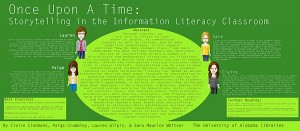I am currently reviewing our learning outcomes, worksheets, and rubrics as the new semester approaches. One of our lesson options for second semester composition classes poses such a difficult quandary: Full Text. Ebook. Web Content. So much of our collection is available in electronic formats, but the formats are not consistent, and students don’t know how to look at a record and anticipate what format they are accessing. In this lesson, we are attempting to address some of the broad media and digital literacy pitfalls students encounter when they are beginner researchers. Things that researchers didn’t really have to face in years past.
Introduction to Library Searching
“In this session, students will learn how to use the library’s search engine Scout, and how to find databases using the database page. This session will not cover controlled vocabulary or keywords (covered in Option 2), or advanced search strategies in Scout or in individual databases (covered in Option 4).”
|
Beginner |
Intermediate |
Advanced |
| Students will use Scout to locate PDF, ebook, and physical book items in order to demonstrate an understanding of the different formats within the library’s collections |
Students use the names of formats (“PDF”; “ebook”) as search terms in order to locate an item of that format in Scout. |
Students use limiters on the left hand navigation exclusively in order to try to filter their search for format type. |
Students use strategic search terms such as discipline jargon and phrases such as “case study” or “research” in order to retrieve items that fall into expected format categories. |
The challenge for librarians in this lesson is to make this content as active as possible. To engage students in the search, instead of presenting information lecture-style.The expectation many professors have as they approach librarians for instruction is that their students will perhaps get a tour and be introduced to the basic resources that the library has to offer, but we’ve found that students benefit from professors and librarians having more in-depth conversations about what kinds of research the student needs to accomplish in order to complete the coursework for their class, and then narrow exposure from “the basic resources that the library has to offer” to “the resources a student will need to accomplish this course’s/assignment’s work.”
To make this lesson as active as possible, I typically push my students into the deep end, helping them navigate to Scout, asking them to find an item in a given format, and then engaging them in peer instruction. Students demonstrate their searches by retracing their steps for the rest of the class. This can seem intimidating, but I work hard to take the pressure off of everyone. This exercise accomplishes several things: when students share their search steps, they reflect and remember, reinforcing their learning. When several students retrace their steps, we discover there are inevitably multiple ways to find any given thing, and they learn that searching is messy and creative and that some strategies yield different results than others.
For more information about our EN 102 lesson plans and library instruction program, please see our Library Guide for EN 102 Instructors (guides.lib.ua.edu/en102instructors)
